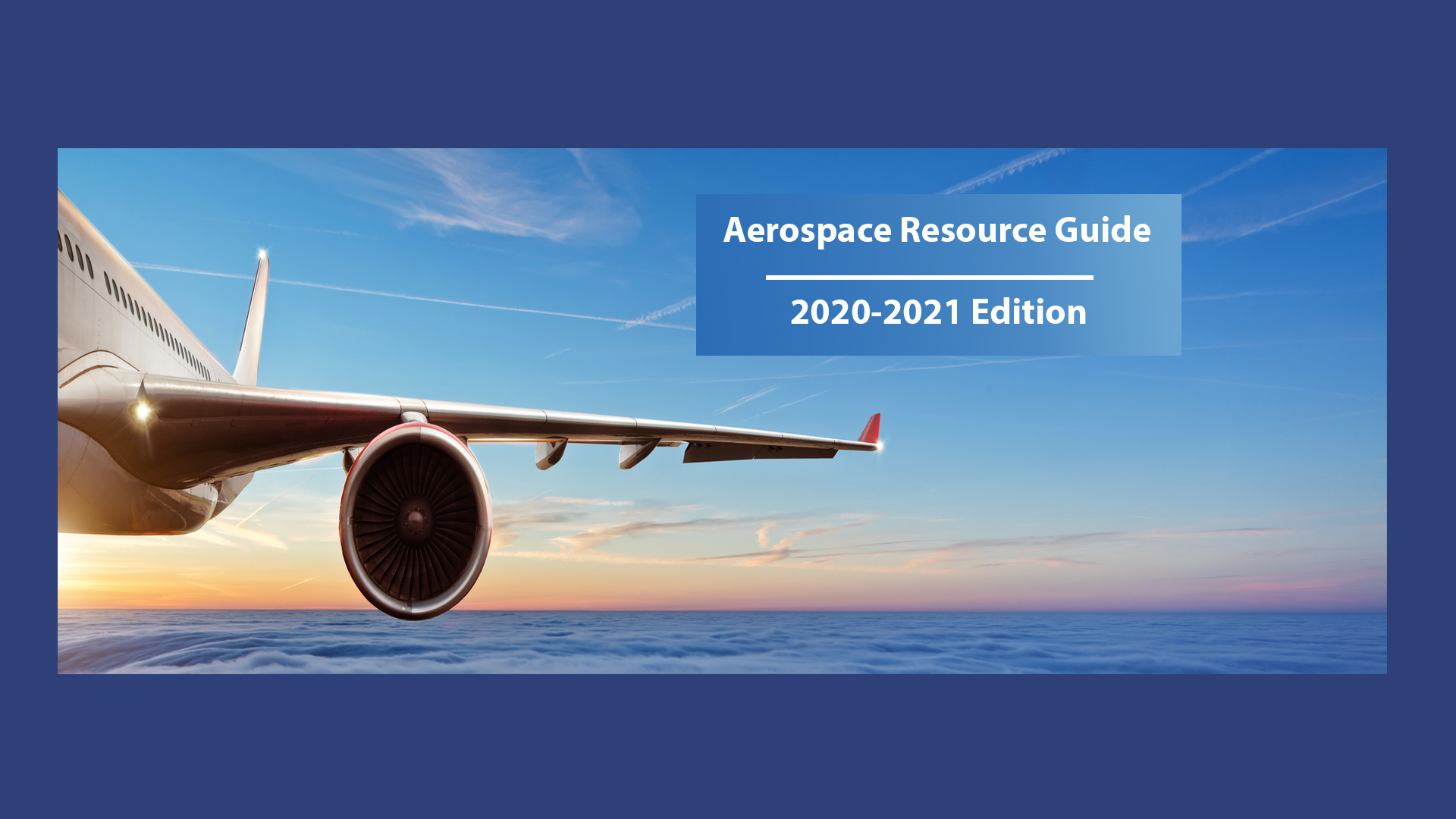Executive Summary
Canada is the world’s fifth largest aerospace market with $24 billion in revenues in 2019 supporting approximately 213,000 jobs. Canada ranks #1 for civil flight simulator production, #3 rank in civil engine production, and #4 rank in civil aircraft production. Approximately 80 percent of Canada’s aerospace sector is civil oriented while 20 percent is military. Montréal is the world’s third largest aerospace hub after Seattle, Washington and Toulouse, France.
Main aerospace subsectors are:
- Aircraft manufacturing (civil, defense and space) (69%)
- Aircraft maintenance, repair and overhaul (MRO) (31%)
Over 50 percent of Canada’s aircraft manufacturing occurs in Québec, 30 percent in Ontario, while 41 percent occurs in Western Canada. In 2018, the sector spent $1.08 billion in R&D; the aerospace sector is five times more R&D intensive than the average for Canadian manufacturing industries. Canada’s MRO subsector has grown by 26 percent over the last decade, and over 25 percent of Canada’s MRO activities are in the defense sector.
Over the years, Canada consistently ranks in the top five export markets for U.S. aerospace goods. In 2018, Canada was the United States’ fourth largest aerospace export market, accounting for nearly US$10 billion in U.S. exports. U.S. companies play a dominant role in the Canadian aerospace sector; close to 60 percent of all of Canada’s aerospace imports are from the United States. The U.S.-Canada aerospace supply chains are highly integrated. Over 60 percent of all Canadian exports are supply chain driven; more than half of all Canadian aerospace exports are to the United States.
Market Entry
A number of U.S.-Canada agreements make it easier for U.S. aerospace companies to do business in Canada than in any other foreign market, including the U.S.-Canada Bilateral Aviation Safety Agreement (BASA) that facilitates airworthiness approval by Transport Canada of FAA-approved aerospace products. U.S. companies can also export International Traffic in Arms Regulations (ITAR) items to Canada more easily due to Canada’s ITAR Exemption.
U.S. companies are encouraged to participate in Canadian trade shows and industry events. Canadian representatives prefer to do business with companies they can build a long-term relationship with. In addition to selling directly to clients. U.S. companies should also consider establishing distributorships or hiring local sales representatives given Canada’s large landmass, hence facilitating greater access.
Current Market Trends and Demand
Prior to the industry disruptions of 2020, production in the Canadian civil aerospace market was forecast to outpace the global market for the 2014-2021 period. This was due to the rise in the need for civil aircraft, particularly the single-aisle, short- to mid-range categories, all markets that Canada dominates in. Due to these disruptions, however, the aerospace sector has been greatly impacted as airlines have had to cancel or delay their orders and delay delivery of new aircraft. While it is difficult to ascertain the full market impacts on the aviation sector, experts say that 2019 production rates will only return in two-three years.
At the time of writing, Canada has sharply increased fiscal spending in healthcare, therefore it is unknown to predict defense spending moving forward. Further, Canada has designated “defense” an essential service and function.
Defense Emerging Technologies: Advanced Materials, Artificial Intelligence, Cyber Resilience, Remotely piloted Systems and Autonomous Technologies.
Leading Competencies and Critical Industrial Services for Defense Aerospace: Aerospace Systems and Components, Defense Systems Integration, Electro-Optical / Infrared (EO/IR) Systems, In-Service Support, Training and Simulation.
Opportunities
Aircraft Parts
The aircraft parts and systems sub-sector is the largest of the Canadian aerospace industry representing over 60 percent of the sector. Within this sub-sector, the best business opportunities are in engine parts and components; composite materials; avionics; manufacturing 4.0 processes; space parts, particularly satellite parts.
Defense Products
Future Fighter Capability Project (FFCP) - The Future Fighter Capability Project will acquire 88 advanced fighter jets, along with associated equipment, weapons and sustainment capability at an approximate cost between US$11 – 14.3 billion.
Remotely Piloted Aircraft System (RPAS) - The RPAS program is for the acquisition of a medium altitude and armed Remotely Piloted Aircraft System. The procurement budget is between US$753 million and US$3.76 billion, and it includes project management costs, infrastructure, contracts and contingency
Maintenance, Repair and Overhaul (MRO)
The MRO sub-sector continues to grow significantly in Canada. While it represented 7 percent of the aerospace sector in 2010, it is now over 30 percent. Canada’s MRO center is in Winnipeg, with substantial aircraft maintenance being done near the Toronto Pearson International Airport and the Montreal Trudeau Airport.
Contact
Gina Rebelo Bento
U.S. Consulate in Montreal, Canada
Commercial Specialist
Gina.Bento@trade.gov
514-908-3660
Luz Betancur
U.S. Embassy, Ottawa
Commercial Specialist, A&D
Luz.Betancur@trade.gov
613-688-5411
